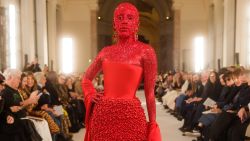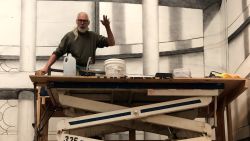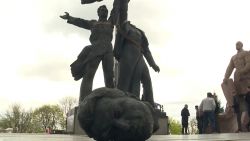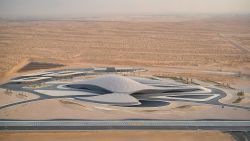Story highlights
Building combines former City Hall and Supreme Court
$380 million construction project took ten years to complete
Home to the biggest collection of Southeast Asian art
A decade in the making, National Gallery Singapore has finally opened its impressive doors to the public.
The gallery combines two of the city-state’s most historic buildings – the former Supreme Court and City Hall – and is home to the largest public collection of Singaporean and Southeast Asian art in the region.
For Director Eugene Tan, it’s the culmination of years of work, curating 8,000 pieces dating from the 19th century to present day.
“I think the public will be surprised to see the depth, the richness and diversity of art that has been produced in the region,” he says.
That’s partly because, until now, there’s been no dedicated space to display Southeast Asian art. As a result, art appreciation in Singapore is “not as advanced as we’d like it to be,” Tan says.
Education is a priority for the gallery, which is working with schools to include more art in the national curriculum. It has also teamed up with a local university, with a view to create Singapore’s first undergraduate degree in art history.
Buildings to inspire
The buildings that house the art are expected to arouse as much curiosity as the works themselves.
Closed to the public since 2005, the City Hall and Supreme Court are the scenes of some of the most significant events in Singapore’s history.
Some areas of the buildings were preserved amid what was a massive $380 million (SGD$536 million) reconstruction project. For example, two cells can be seen within the walls of the Supreme Court, where prisoners used to be held before facing trial.
An inside look at National Gallery Singapore
The City Hall chamber has been frozen in time as well, so that visitors can appreciate its historical significance.
“It was in this chamber that the Japanese surrender to Allied forces was signed at the end of the second World War, as well as where our first prime minister and cabinet was sworn in, in 1959,” Tan says.
Merging the two buildings to create one structure was a complicated architectural feat, which required reinforcing foundations deep underground.
“In fact we created three new basement levels, two for parking and one for public access, but this also helped to strengthen the foundation of the building,” Tan says.
Thousands of visitors
On Tuesday, the first day the gallery opened to the public, around 5,000 visitors were in attendance. Those numbers are expected to swell on the weekend, when an art carnival will be on site.
One of the most distinctive pieces on display is “Forest Fire,” a large painting dating back to 1949 by Indonesian artist Raden Saleh. “It’s a very apt painting!” Tan laughs, referring to the city-state’s recent troubles with haze emanating from Indonesia, its southern neighbor.

According to Tan, the piece was painted for King William III of the Netherlands, who later became a painter for the King until the Indonesian artist’s return to Java in 1851.
Other notable inclusions are works by Singapore’s Nanyang artists – Chinese migrants who arrived in Singapore and adapted Western styles of painting, such as the use of oil, to portray local subjects.
As well as permanent exhibitions, the gallery will be inviting guest artists to create site-specific works, and staging temporary exhibits to “further explore the links between the art of Southeast Asia and the rest of the world.”
The first, which begins in April, will be on “Reframing Modernism.” It’s a collaboration with the Center Pompidou in Paris.
“We’re borrowing from their collection as well as ours to reexamine how modernism developed form the perspective of Southeast Asia,” Tan says.
The Singapore National Gallery will be free to the public until December 6.






























